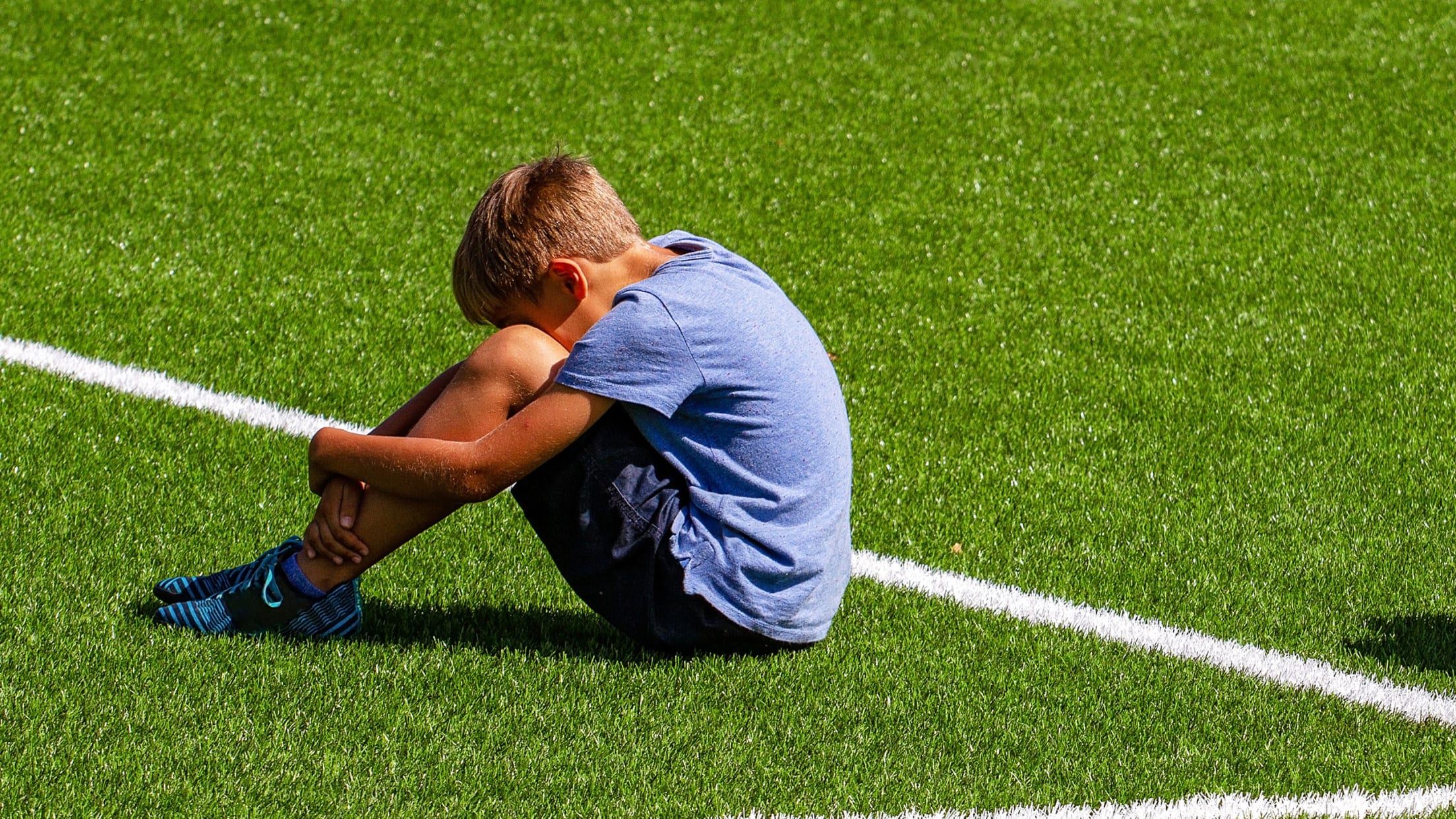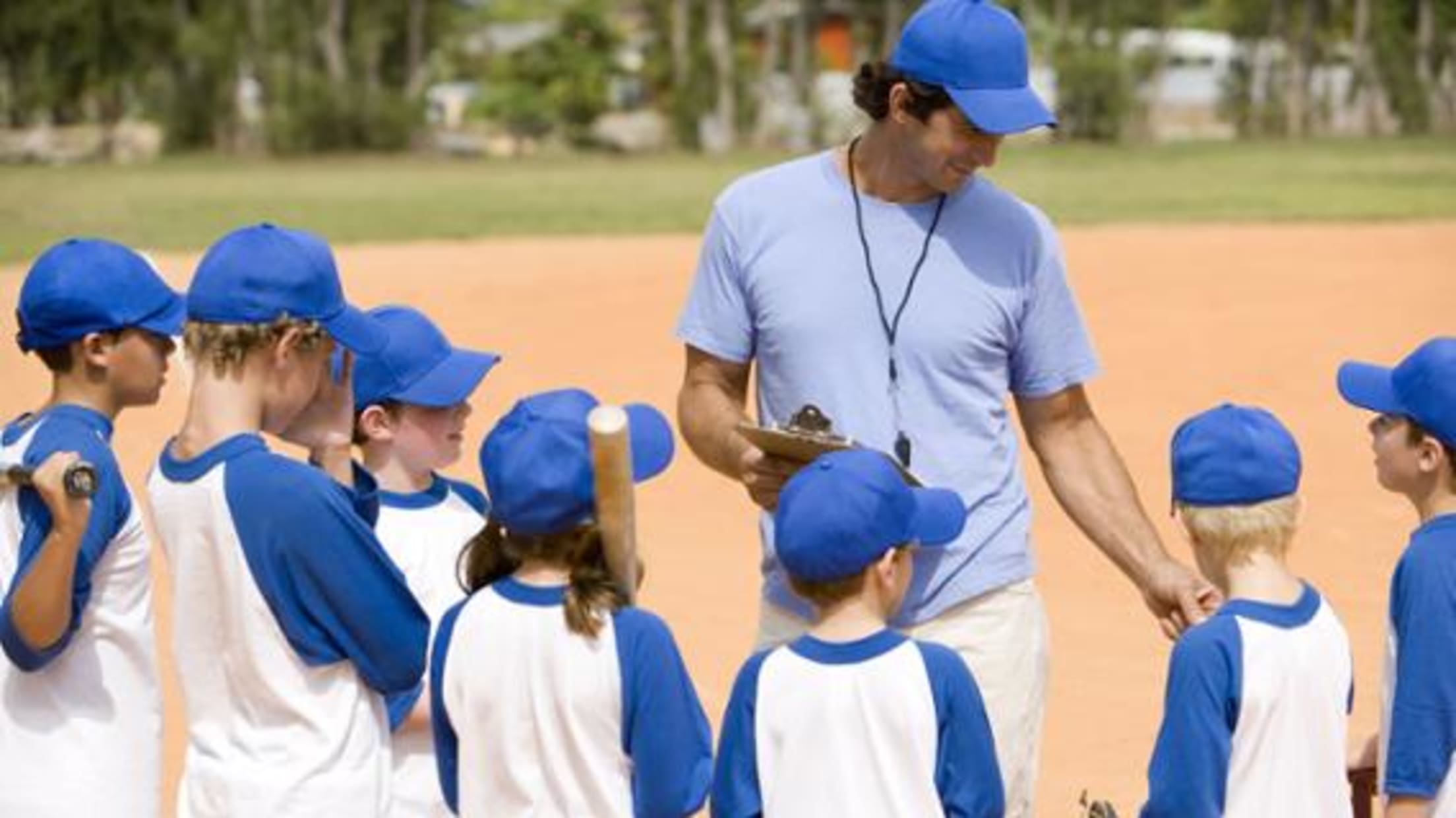TrueSport: September 2019

What to do when your athlete needs a break, how to spot warning signs of hazing and how to welcome new teammates this month from TrueSport.
Trending
What to do when your athlete needs a break
When your young athlete needs a break from their sport, it's your job as a parent to support them and help guide them through this challenging time. Steve Smith, PhD, a professor of clinical psychology at UC Santa Barbara, works with parents and young athletes as they navigate sporting life, and he's seen many athletes take breaks from a specific sport before returning the next season stronger and happier than ever.
Here's what he wants parents to know:
Don't panic
It's easy to start catastrophizing when your child needs to take a break or wants to try something different. "Talking with parents about this can be a real challenge, because many get so heavily invested in their child's participation or results in one given season," says Smith.

"There's good research that shows kids need breaks from sport and pushing too hard can often end in outcomes that no one wants." Don't forget, a break isn't always because of a physical injury -- your athlete might need a mental and emotional break as well. Everyone can burn out from pushing beyond their limits, both physical and emotional, even at a young age.
Be aware of your response
For some parents, it can be hard to accept that your athlete needs a break. On a conscious level, you may not even be aware of how you're reacting, but your young athlete might sense your disappointment.
"Parents will say they're OK with the child taking a break, but the child will tell me, 'If I take time off, my parents will be disappointed,'" says Smith. "Parents are communicating something different to their child than what they're saying, and it can be really confusing."
Find an expert
The hardest part of helping an athlete take a break from sports can be the initial conversation. You may not want to be the one who tells your athlete they need a break -- and honestly, many pre-teens and teens are disinclined to listen to you anyway. Smith recommends seeking out an expert, such as a sports medicine doctor, sports psychologist, or physical therapist, who can assess and explain the reason for taking some time off.
"It's helpful to have a third party involved. A sports medicine doctor can help explain to a young athlete that six weeks off now can lead to six years of strong play," he adds. "A coach can also help here, telling an athlete that leaving is only temporary and they still have a place on the team."
Make an active recovery plan
Many athletes and parents panic at the idea of a break, simply because there isn't a firm timeline or plan in place. This especially true for young athletes who are told to take time off but may not be given a strategic recovery plan that involves low-impact exercises, physical therapy or mental wellness activities.
Depending on the situation, a coach may be able to help create this plan in tandem with a doctor, physical therapist or even a sports psychologist. However, Smith notes that not every athlete wants to immediately return to sport, so if your child seems uninterested in a return, don't force it.
Help your athlete keep in touch
Staying connected with coaches and teammates can be hugely beneficial. "Often, a child's teammates are their closest friends, and suddenly he's not seeing them every day at practice, and it can feel like his friends are moving on without him," says Smith.
Keeping in touch with a coach can also help with a child's motivation and eventual return to sport, and it keeps the coach connected so he knows when the athlete will be able to return to play.
Find similar athletes
"There are so many great blogs and online resources out there created by athletes who've had the same hurdle as your child," says Smith. "Search for those so you can show your athlete that he's not alone in needing a break, whether it's due to injury, burnout or even just to pursue another sport or hobby. There's always a success story that you can point to."
_____
The hardest part for both parents and athletes on a break from sport is that suddenly, time opens up. For a lot of young athletes, hours after school and on weekends are dedicated to practice and competition, and the new free time can be daunting.
Let your athlete take a few days to indulge or recover with some time spent relaxing but try to find ways to fill the time after the first week, says Smith. "Find a new activity that can be life-enhancing so that time can be really enriching," he suggests. That may mean joining a new club at school or spending time as a family doing things like hiking or taking a class together.
Parents also may find themselves at a loss when, suddenly, they aren't driving to and from practice and competition. This is a good chance for you to take some time for yourself, perhaps restarting your own exercise regimen or spending more time at home. "Know that you deserve a break, too," Smith adds.
Parents
How to spot warning signs of hazing
There's a not-so-secret epidemic happening on high school and college campuses: hazing. Although the hazing culture is condemned, sadly, it's common.
In the National Study of Student Hazing, 55 percent of college students involved in clubs, teams, and organizations experience hazing. The same study found that "for many students who step onto a college campus and choose to join a team or organization, hazing is not a new experience." In fact, 47 percent of the respondents report experiencing at least one hazing behavior in high school.
Unfortunately, the code of silence around hazing in high school athletics isn't just limited to those on the team, who often view these events as a rite of passage ritual. Sometimes, there are also coaches and school administrators who are guilty of failing to report hazing practices.

As a parent, these incidents and statistics are likely unsettling. But, the more you stay vigilant and educated about the current climate of hazing culture, the better equipped you'll be to support any athlete who finds themselves in a hazing situation. With that in mind, here's how you can identify hazing behavior and address hazing if you find it infiltrating your athlete's sports program.
What is hazing?
According to the NCAA, hazing is any act committed against someone joining or becoming a member or maintaining membership in any organization that is humiliating, intimidating or demeaning, or endangers the health and safety of the person. Hazing includes passive participation in such acts and occurs regardless of the willingness to participate in the activities. Hazing creates an environment/climate in which dignity and respect are absent.
What is the true impact of hazing?
Susie Bruce, director of the University of Virginia's Gordie Center, which works to end hazing and substance misuse among college and high school students, states, "Hazing is associated with lower team cohesion and can have long-lasting effects, and in some cases, even death. The Gordie Center is named after Lynn "Gordie" Bailey Jr., who died three weeks into his freshman year of college from a hazing-related alcohol overdose. He and 26 other new members were told to drink four handles of whiskey and six bottles of wine in 30 minutes. After he passed out on a couch, no one checked on him until the next morning when it was too late.
More common risks of hazing include physical injuries (which may end a student-athlete's season), and more hidden psychological harms. Some students may develop symptoms of post-traumatic stress disorder, such as nightmares, depression and feelings of shame."
What are the warning signs of hazing?
As with many personal topics, athletes may not feel comfortable sharing their concerns about hazing - whether they're being hazed or are witness to an incident. HazingPrevention.org shares several key signs to look for as they may help you identify whether your athlete is experiencing hazing:
- Withdrawal from their normal activities
- Unexplained injuries or illness
- Unexplained weight loss
- Physical or psychological exhaustion
- Increase in secrecy and unwillingness to share details
- Sudden decrease in communication with friends and family
- Sudden change in behavior or attitude after joining the team
- Wanting to leave the team with no real explanation
What can you do to help prevent hazing?
Everyone can participate in the fight against hazing. Make a serious commitment to educate each other (athletes included), about the dangers of hazing. Work together to send a clear message that hazing will not be tolerated and those who engage in hazing behaviors will be held accountable for their actions.
Bruce recommends, "Coaches, parents, and schools be proactive in consistently communicating to students:
- What hazing is,
- The hidden harms of hazing,
- That hazing is not tolerated,
- Reporting options if students experience hazing,
- The range of individual and team sanctions for hazing, and
- Appropriate ways to build team cohesion such as outdoor excursions, team dinners, and community service. Teams are more likely to haze if healthier methods of group bonding are not readily available.
Bruce continues, "These messages must be delivered in multiple ways (verbally from the coach, from team captains, on posters, message boards, etc.) and continually throughout the year. Each year, a quarter of our school/campus population turns over, so we need to integrate hazing prevention into all of our programs."
"To truly create culture change, students must help lead conversations about hazing and how to create positive team-building activities. A top-down approach is not effective and may lead more secretive hazing practices. Providing students with bystander intervention training (such as the national Step UP! program) empowers students to intervene effectively when they witness hazing behaviors or when questionable activities are planned by their team," adds Bruce.
As a parent, you can:
1. Model respect
Be the example for your athlete and ensure that your behavior is consistent with the behavior you expect from your athlete.
2. Stay informed
Keep yourself and others involved in the sports community informed about anti-hazing policies set by the team and school. Work with coaches to make sure information on hazing gets distributed in preseason meetings.
3. Use teachable moments
The subject of hazing may come naturally as your athlete progresses through sports. Stay engaged in the ongoing conversation and develop some key messages about hazing to share with your athlete.
4. Respond to behaviors that concern you
If you see behaviors that cause concern, you should share your concern with your athlete. As a voice of support and encouragement in and outside of sports, you can send important messages that positively impact your athlete and their team.
5. Get involved with welcoming new players to the team
Help encourage the development of positive team traditions by proactively welcoming a new athlete (and their family) to the team. This will strengthen the bond on the team and on the sidelines.
_____
Changing a culture or a mindset is a challenge, but when the stakes are high and your athlete's health and wellbeing are at risk, it's imperative that those involved in sports remain proactive in the fight to end hazing culture.
If you find that your athlete is the victim of hazing or has witnessed an incident, contact the team coach, school administrator, or the organization's advisor to have an official, confidential discussion about the situation.
Coaches
How to welcome new teammates
Being the new athlete on a team can be one of the scariest experiences for a young athlete, and as a coach, you have the power to improve -- or worsen -- the situation. While you're likely busy running practices and preparing for competition, taking time to help new athletes assimilate onto your team can shape an athlete's entire sporting experience. Dr. Tasha Belix, a registered psychologist, shares best practices on how coaches can prepare themselves and their team for new members.
Prepare for a new athlete
Whether it's before the season starts or before the first practice, start a conversation with your new athlete by asking a few questions to get to know them better. That preparation can help you determine the best way to make sure the 'new kid' is seamlessly integrated onto the team.

If an athlete is shy and would prefer not to be put on the spot at the first practice, try assigning them one or two 'buddies' to help show them the ropes. For more outgoing athletes, encourage them to lead one of the simpler drills and do a more traditional 'getting-to-know-you' introduction.
Belix suggests that there's no right way to introduce every athlete, and the more tailored you can make that first meeting, the better the athlete will feel afterwards.
Make a team plan
"Let your team know a new person is coming before they show up, if possible," says Belix. "Don't always rely on the same person to step up and help the new athlete through the first practice."
Encourage your entire team to take on a leadership role and take the opportunity to 'buddy' up with their new teammate. It will help your team get to know the new player on their own and relieve the stress on the newcomer to initiate every conversation.
Keep an eye on the new kid
While you should let the new athlete integrate into the team naturally, you should also be on the lookout for bad behavior from your players.
"If you see the new athlete being treated poorly, of course you need to act on that," says Belix. This means acting as early as possible versus waiting for a situation to become more dire -- bullying can be subtle. "Trust your gut. You may need to have a chat with athletes and hold them accountable."
Check-in after practice
Try to make time for a quick one-on-one with the new athlete after practice, without singling him out. "Have a quick conversation about how the practice went, if they are feeling comfortable, if they need anything, or if they have any questions or concerns," Belix says.
Often, after the initial introduction, a coach assumes that a new athlete is integrating fine, but this check-in process can help an athlete feel heard. Belix adds that if the new athlete is chatting with their teammates, postpone talking with them versus interrupting.
_____
As a coach, it can be hard to step back and let the new athlete on the team integrate on their own terms, but it's necessary. Remember that "some kids are less social than others and that's fine," says Belix.
"Don't necessarily assume that an athlete isn't fitting in if they're not immediately making friends. Pushing a new athlete will likely just make them feel uncomfortable - give those athletes space if they seem to be happy otherwise."
About TrueSport
TrueSport®, a movement powered by the experience and values of the U.S. Anti-Doping Agency, champions the positive values and life lessons learned through youth sport. TrueSport inspires athletes, coaches, parents and administrators to change the culture of youth sport through active engagement and thoughtful curriculum based on cornerstone lessons of sportsmanship, character-building and clean and healthy performance, while also creating leaders across communities through sport.
For more expert-driven articles and materials, visit TrueSport's comprehensive LEARN resource.
This content was reproduced in partnership with TrueSport. Any content copied or reproduced without TrueSport and the U.S. Anti-Doping Agency's express written permission would be in violation of our copyright, and subject to legal recourse. To learn more or request permission to reproduce content, click here.
